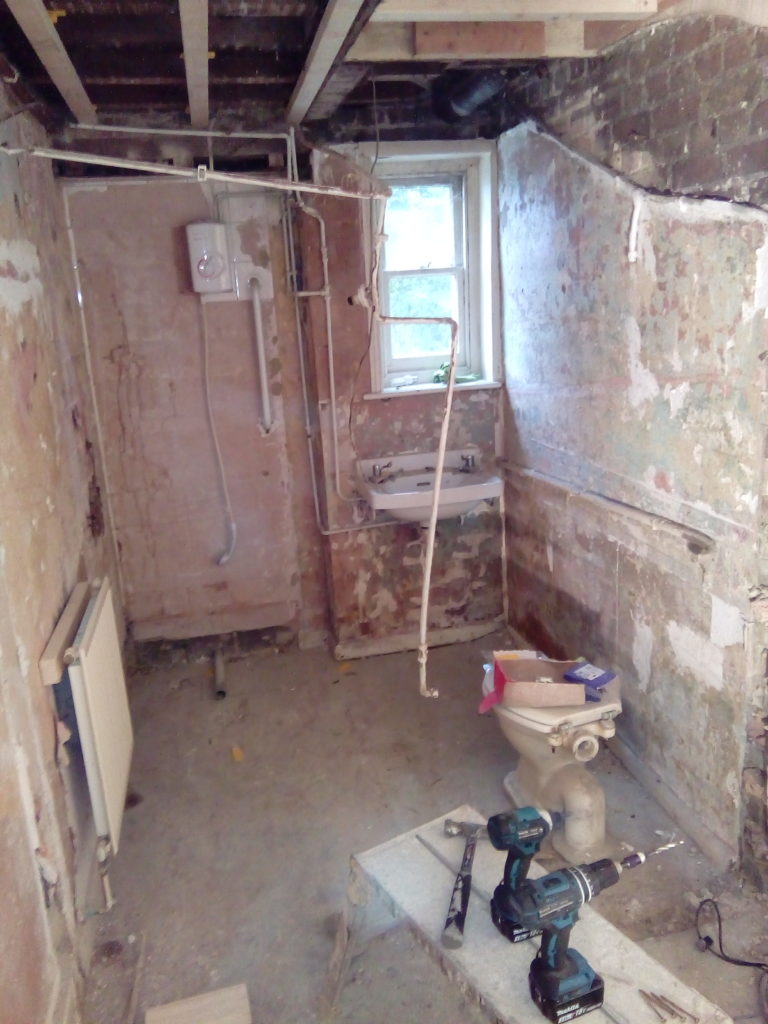
When it comes to renovating old or run-down buildings, property refurbishment knowledge is king. Knowing that the cracks in the walls that have put most other buyers off can be fixed easily may mean you get hold of a money-spinning bargain. Knowing when it is best to walk away because the cracks mean that the wall has to be entirely rebuilt can save you sinking your last penny into a money pit.
Property refurbishment or renovation as a strategy is a good way of adding value to a property, either with a view to refinancing at a later date (if holding as a Buy to Let) or with a view to immediate resale for a profit, known as ‘flipping’.
Whatever your reason for undertaking a refurbishment, it is imperative that you have a good idea of the likely costs to enable you to set a buying price that will result in a profit!
Which Property Refurbishment Projects Should I Choose?
Before launching into a property refurbishment project it is important to have a very good idea of whether you intend to sell for a profit or to hold as an investment. This will be largely driven by the numbers in terms of your return on capital that will remain in the property if you hold it as a Buy to Let. Some just won’t stack up. There are some example figures later in this article. Over time you will develop a gut feeling as to which category a refurbishment project will fall into.
For those just starting out, the ideal property refurbishment projects are those that are livable but very run down. Typically these will be properties that look like they haven’t been decorated since the 1970s. Wooden paneling and brown swirly carpets are a good sign. Many people are put off buying these as they don’t look pretty and people often can’t see through the mess to envisage what the finished article will look like. Property refurbishment isn’t for everyone and most people want to buy a property to live in. If a property needs to be gutted, the purchasers will need to live elsewhere whilst the work is done. Most buyers can’t afford to do this so these properties tend to stay on the market for a long time. First time buyers almost certainly can’t buy such properties as their mortgage is usually a very high percentage of the purchase price and they struggle to raise a deposit and will therefore not have the spare capital to refurbish the property.
Properties fitting this description often come onto the market when somebody has died. The family usually just want the money quickly, and do not want the hassle of a refurbishment project to maximise the value of the property. There is also often an emotional attachment to the property and they would rather remember it how it was when it was their loved one’s home.
There’s a plentiful supply of these properties in most towns. Quite often though these do not come to the open market via Estate Agents. What you really want to know is who’s likely to accept a very low offer for a quick sale. That’s why it’s good to build relationships with probate solicitors and local estate agents to find good property refurbishment projects. Leafleting is less effective in these cases as the properties are not visited frequently and direct mail is typically thrown out by the relatives.
A good way to approach a local probate solicitor is under the guise of needing a new will. During this meeting the solicitor will get a good understanding of your assets and liabilities and you can explain that you are in the business of buying property for renovation. Assuming the meeting goes well this will be a good starting point for future property leads to be passed to you from the solicitor.
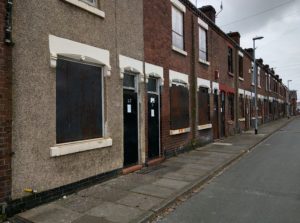
Finding the Right Property.
Once you have found a source of suitable properties the simplest way is to start checking your figures is on websites such as Rightmove. Establish what similar properties are selling for in the area. Go and look at a few to gauge the standard of the finish. Also look at what similar properties have sold for recently. One thing that people often forget is that they are in this for a profit. There is no point in doing a property refurbishment unless you can make a profit. You should be aiming for 20% to 30% profit margin once you have factored in all costs necessary to achieve a similar standard of finish. Unfortunately profit making leads are increasingly difficult to find due to the increased competition from budding ‘refurbishers’. You may have to turn down a lot of deals that don’t fit your criteria. Remember to explain to your solicitor contact why this referral wasn’t for you. If you simply keep saying no the referrals will stop.
When you do eventually find a good property it is very important to act quickly. Do not offer solicitors or estate agents finders fees as they are not allowed to take them. However it is a nice gesture to buy the introducer and their partner a nice meal or a small gift after a deal has been done.
Financial Considerations.
If you buy with a mortgage and intend to sell be aware of early repayment charges. If you buy without a mortgage remember that it is difficult to get one for at least 6 months following a purchase. If a property isn’t habitable you may well decide to buy for cash or use bridging finance and refinance later. What you might also consider is a deferred completion. In simple terms, this is where you exchange contracts then agree a completion date a few months in the future (rather than the typical 28 days or less). You make your offer subject to these terms and on the basis that you want to be able to refurbish the property between exchange of contracts and completion. Solicitors standard advice to vendors is do not agree to these terms. The risk to the vendor is that the purchaser could destroy the property and significantly reduce its value and then fail to complete. A compromise to reduce the risk to vendors is to pay a 50% deposit on exchange of contracts. Obviously you would have to have cash to do this as a solicitor would never advise a vendor to allow a charge to be taken over the property by a lender or bridging finance company. Such deferred completion arrangements can be the difference between doing one deal at a time or doing two if liquidity is tight.
Good Buy or Bad?
OK, so you have found a source of property refurbishment projects of a similar type, either on the open market or via a probate solicitor. You are reasonably comfortable with the ultimate market value and quality of refurbishment required. At this point, assessing the structural condition of a house in need of renovation is critical in discovering what that building is really worth in the current market. Knowing what is wrong with a building is important but you also need to know how much fixing any problems is going to cost. Deciding whether the property is a good buy or bad involves weighing up those costs, together with the purchase price, against the likely end value. A house that is a total wreck can still be a good buy at the right price, whilst a gem of a place, in need of only minor repairs, can be a bad buy if it is already overvalued.
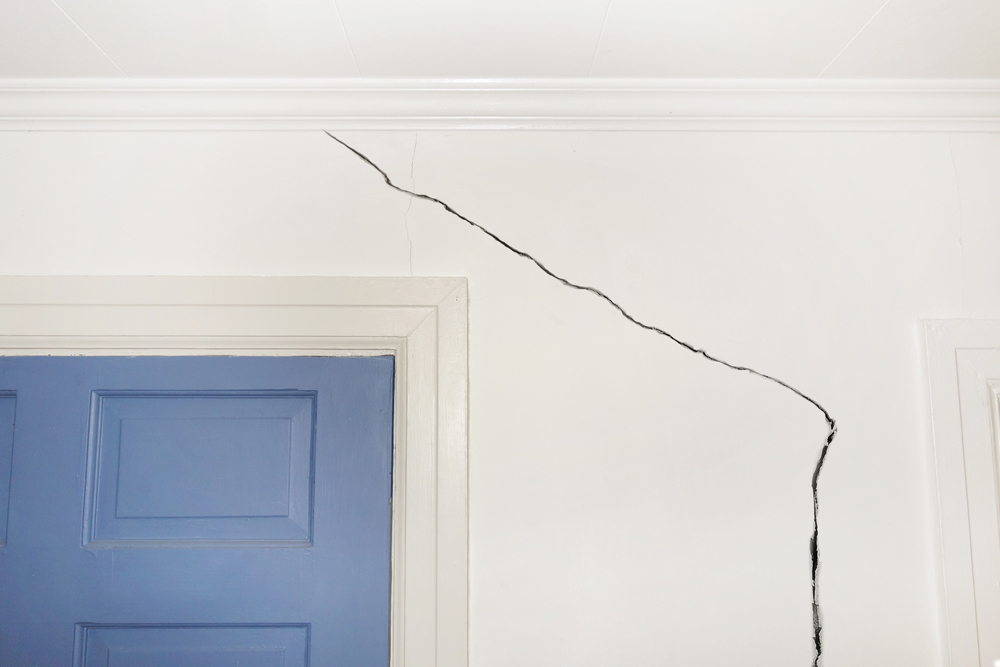
Assessing the Structural Condition.
You can learn to spot many structural defects yourself through research and it is well worthwhile. However, anyone thinking of buying an old house, other than an experienced renovator, should always commission a building report by a chartered building surveyor. Unless you have real knowledge it is a false economy to save on the few hundred pounds that it costs for an expert’s opinion.
Whilst being able to spot major problems yourself is no substitute for a survey, it can help you decide whether or not it is worth forking out for one (£500-£1,500). Sometimes the cost of renovating a building, relative to its likely end value, is clearly so high that it is not even worth commissioning a survey.
If you do commission a building report, be aware of its limitations. A surveyor can only make a visual inspection of a building and so cannot discover or reveal hidden problems. The report is unlikely to include a valuation unless you specifically request one and whilst the report should include a schedule of any remedial work required, sometimes listing repairs in order of priority, it is unlikely to give a written indication of the cost of those works. Although some surveyors may be willing to indicate likely repair costs, this part is usually down to you to find out.
Interpreting Your Findings.
Whether you have discovered a buildings problems by inspecting it yourself, with the help of a builder or architect, or following the findings of a building report, the next stage is to interpret the implications of those findings. You need to know how serious the problems are; whether they can be fixed; how long it will take and, most importantly, how much it will cost to put right. Here is a list of some of the most common problems found in old buildings and their likely implications.
Typical Defects:
Wiring Requires Updating.
Rewiring a typical three bedroom terraced house (90-100m²) will cost from £2,500-£4,000, including removing the old wiring, lifting and replacing the floorboards, and installing a new consumer unit, but excluding making good the plaster and decoration. The job should take a pair of electricians five to seven days.
The tell-tale signs that a house is in need of rewiring are easy to spot. Look for an old fashioned fuse box instead of a modern consumer unit, old fashioned round light switches, round pin plugs or old wires.
Another good sign is unusual green staining underneath the bottom of light switches and sockets. This is a product of a reaction between the plasticiser in the insulation sheathing of the wiring and the copper in the wire. In itself it is non-toxic and does not indicate a failure of the insulation but it is a good indicator of the age of the wiring.
No Central Heating.
Adding a wet radiator, gas central heating system to a typical three bedroom terraced house will cost £2,500-£5,000 and will take a plumber eight to ten days. Adding central heating is easily one of the most cost effective improvements you can make to a house and will always add more to the value of a property than it costs to install.
Rainwater System in need of Repair.
A replacement PVCu rainwater system will cost around £400-£800 for a typical three bedroom terraced house however, the gutters and downpipes on an old property rarely need replacing entirely and wherever possible, original cast iron rainwater systems should be retained.
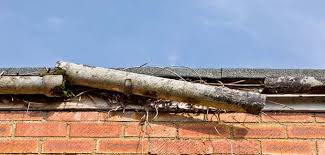
Cracks: Are They Structural or Cosmetic?
Cracks in plaster walls and masonry can look extremely worrying, but are frequently only cosmetic. Being able to tell them apart from the symptoms of more serious structural problems can be very useful in making your initial verdict on a renovation project and in the decision over whether to commission a survey or walk away.
Cracks to materials that are isolated, for instance a crack in a single brick, or a stress crack in a plaster wall adjacent to a window or doorway, are unlikely to be structural. Where the cracking is more extensive and follows a pattern, i.e. a crack running through a series of bricks, there is likely to be a more serious cause. Look for signs of movement in the building. This can include internal issues such as doors sticking on carpets and flooring – particularly if they are stuck in the open position. Typical causes are subsidence or heave in the ground which may necessitate underpinning beneath the walls, or the failure of the floor or roof structure. In a very old building, however, the structure may be perfectly stable despite twists, bows and warps, and attempts at repairs may do far more harm than good.
No Upstairs Bathroom.
Many old houses were built either without bathroom facilities or have since had them added on the ground floor. Installing a new bathroom at first floor level is likely to cost around £800-£1,200, with a basic white bathroom set from one of the DIY stores costing around £300-£450. Creating the stud walling for a new bathroom out of an upstairs bedroom is likely to cost £1,700-£2,800 including finishing and tiling, but consider the implications of possibly losing a bedroom to make space for a new bathroom. If you can instead pinch the space from part of the largest bedroom, you may still be able to keep the same number of bedrooms.

Dry Rot.
A fungus that will destroy timber very quickly. Contrary to what the name suggests, dry rot requires moisture to start and spread. It even penetrates brick walls to get to more timber. Dry rot loves moist, poorly ventilated conditions and is usually found in the roofspace or under wooden floorboards.
Dry rot is easy to identify: the fungus sends out strands along the timber and through/along any wall – often between wall and wall paper. These strands can become quite dense to form a mass like cotton wool, penetrating and destroying the timber. The first sign of dry rot is often its distinctive musty smell when you lift a floorboard or even just the carpet. Wooden skirtings and architraves can also be seen shrinking and cracking.
Getting rid of dry rot can cost several thousand pounds for treatment by a specialist firm. Repair costs for replacing any damage are in addition to this, and can be extensive. Some recommend the removal of all infected materials. The best way to prevent a recurrence is to improve ventilation and eradicate any damp.
Wet Rot.
Hardly a problem compared to dry rot. It is basically the timber decaying naturally in the presence of high levels of moisture. Timber suffering from wet rot will feel spongy (even through a coat of paint) and look darker than the surrounding timber. When dry, the timber will easily crack and crumble into fine particles.
The cost of solving wet rot will depend on the damage it has caused to timber in the house. Repairs should be treated by cutting out the effected area or removing the whole timber and replacing. The problem will not return if you solve damp problems in the house and improve ventilation.
Cracked or Blown Render.
Minor cracks in cement render are rarely more than cosmetic and are inexpensive to fill and repair. If cracks are more severe, however, check that they are not a sign of structural movement by inspecting the blocks or bricks beneath. If the render has started to come away from the wall typically due to prolonged frost damage it will need to be removed and replaced.
New Kitchen Required.
The mainstay of most property refurbishment projects, assuming modest tastes, a basic galley style (typical terraced house), contract quality kitchen from a builder’s merchant or popular DIY store can be fully installed for £3,500-£5,500, including all white goods, oven and laminate worktops (assuming an area of around 10m²). DIY installation would reduce these costs.
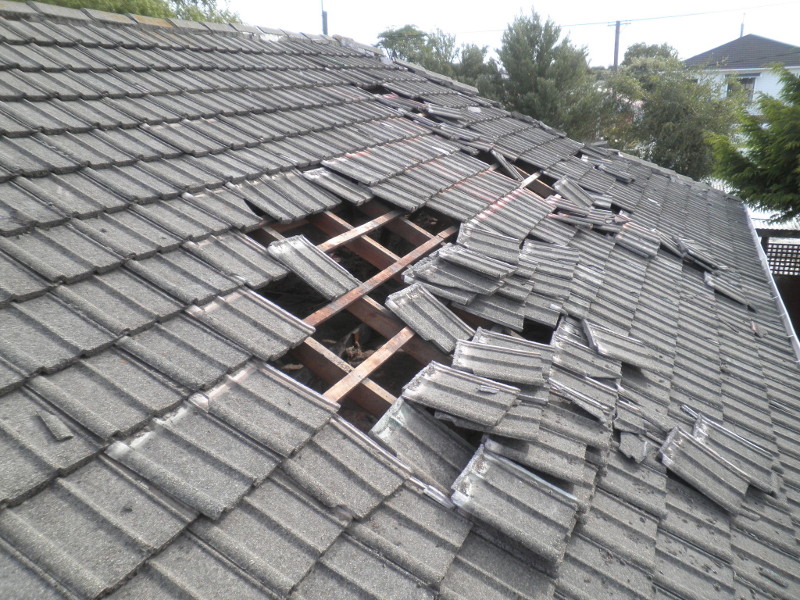
Remedial Roof Repairs.
Roof damage will usually manifest itself in leaks inside the house. Typical problems will be broken or slipped roof tiles, missing or damaged flashings, damaged or missing underfelt, and worn pointing on verges. Providing the problem has been spotted early enough, the roof structure should not have been exposed to sufficient damp for it to require total replacement. Where timbers have been damaged due to exposure to the elements, they will need replacing.
Replacing or refixing a few roof tiles or slates, and repointing the verges, is not a major task and will cost £200-£400. If the damage is extensive, then it may be cheaper to remove the old roof covering and lay a new roof. The advantage of this is that the roof can be felted and battened to make it weathertight. Replacing the entire roof over a typical three bedroom terraced house will cost from £4,000-£6,000 excluding scaffold hire.
Collapsing Ceilings.
A collapsed ceiling is a common property refurbishment task and is usually a sign that damp has got into the structure or that there has been a flood or water escape of some sort. Sometimes, multiple layers of old plasterboard or ceiling covering have become too heavy to be supported by the original fixings and start to come adrift in places giving a ‘sagging’ look. Old lathe and plaster ceilings can be incredibly messy to remove as they produce a vast amount of rubbish. In most instances the ceiling will need to be replaced using plasterboard, fixed onto new, level ceiling joists, and finished with a skim coat. Costs are likely to be £400-£500 per room, including removal of waste. If the ceiling has not collapsed too far, and you have a sound surface to attach to, you may be able to plasterboard over the original lathe and plaster ceiling instead, at a cost of £100-£200. If the damaged ceiling is of newer plasterboard construction it can be easier to patch repair and skim.
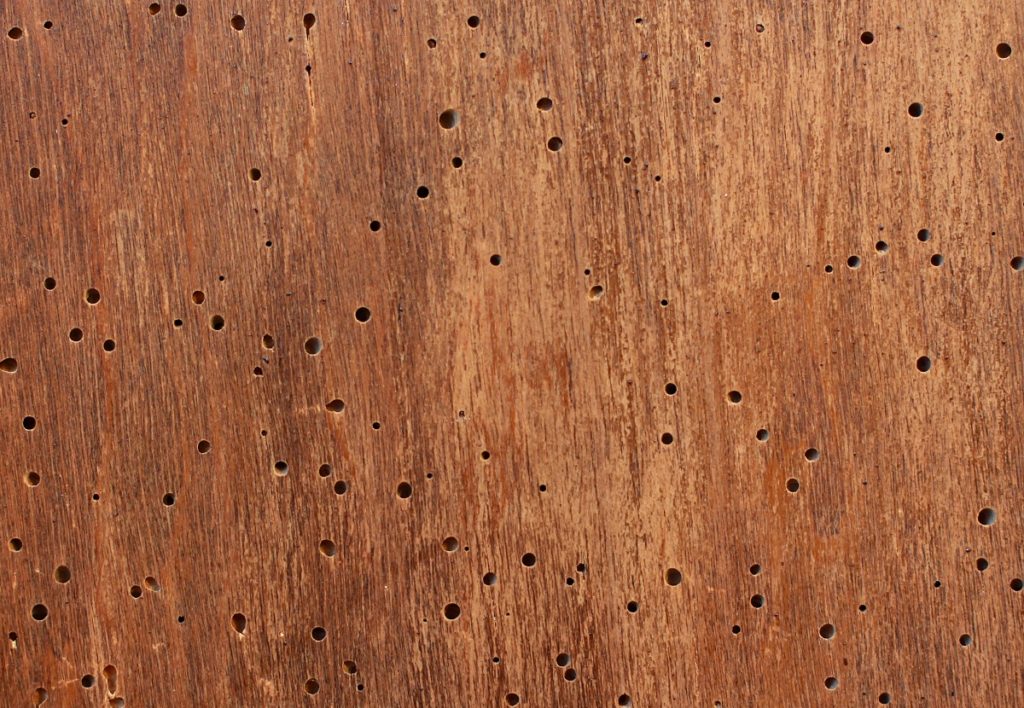
Woodworm.
A common pest in damp timber and can cause major problems if the damage is extensive. However, in most situations the damage is superficial (providing the holes are 2mm diameter or less) and the problem can be eradicated using pesticides. The problem can be more serious if the woodworm has managed to get into less accessible areas of the structure that cannot easily be treated. Before paying for any treatment, make sure the woodworm is still active and has not already been eradicated look for signs of a sawdust-type residue around the holes. Pesticide treatment will cost from £800-£1,500 for an average house.
Signs of Damp in Walls or Floors.
Old buildings without damp are the exception, so do not be too concerned about signs of damp as they can always be solved. First you need to identify the source of the damp and, once discovered, solving it involves simple and inexpensive repair or replacement. In an old brick building a damp proof course can be created by injecting silicone into the bricks both inside and outside the building. For the average three bedroom terraced house this is likely to cost around £500-£800 plus the cost of redecorating, (total cost £1,700-£2,200) as it usually involves replacing the damaged plaster from all ground floor walls up to a height above the level of the rising damp. Penetrating damp from the outside (often on upper stories) is normally easier to solve and can often be traced to defective rainwater goods, roofing tiles or valleys, or sealant around windows. Despite this, it is common for such defects to go unresolved for many years which can lead to more extensive damage. Always aim to identify and cure the cause of the problem first before attempting to rectify the internal damage.
Windows Require Replacing.
PVCu double glazed windows will cost from £150-£800 each and the same again for fitting. A new door will cost £250-£800 plus £150-£250 for installation.
Replace your original windows with caution, however, as they can be an inherent part of a buildings character and therefore its value. Original windows can often be repaired and this may cost less than replacing them with new windows in a sympathetic style. In many areas, however, replacement windows are a must for all buyers and will add considerably more to the value of a property than they cost. Even so, it is worth paying considerable attention to the style and proportions, and which lights should be opening or fixed.
Evidence of Subsidence or Heave.
Really this is beyond the scope of simple property refurbishment, but we included it hear for completeness. Where the ground has either expanded or shrunk due to a change in moisture content, it can have a dramatic effect on the foundations and walls of a building or its ground floor oversite slab if supported directly on the ground.
Subsidence is where the ground level drops, and heave where it lifts. Both problems will manifest themselves in undulating and or cracked walls or floors. Ground movement typically occurs after a period of extreme rainfall or drought, where trees have recently been planted or removed close to the building, or where there has been localised flooding. Houses built in clay soils with shallow or no foundations are the most prone to this kind of problem.
The consequences of movement on the structure of a house can be dramatic and so this is an area where extreme caution and independent expert advice are required. A building can almost always be stabilised and repaired, but the issue is one of cost. Sometimes it can be cheaper and easier to demolish a property and treat the site as a plot, than it is to repair the problem by underpinning the walls with concrete.
In addition, the end value of a building once it has been underpinned can be severely compromised because buyers are likely to be wary of any continued risk, and because insurers may be reluctant to provide cover. Mortgage lending on such properties is also often problematical.
Before proceeding with any underpinning work, check for the proximity of drains, as a collapsed drain can cause ground movement resulting in cracks in walls that can be mistaken for subsidence.
Poor Decorative Order.
A term that is likely to be applied to most buildings in need of renovation. It sounds benign and therefore inexpensive to put right, but can be a catch-all term for problems ranging from the need for a bit of clearing and redecorating, to a total replaster throughout. Replastering the walls and ceilings of a three bedroom terraced house will cost from £2,500-£4,500 and will take a gang of two plasterers 8-10 days.
Conclusion
Property refurbishment can be very profitable either when subsequently held for investment or when sold. By forcing the appreciation of the property it is possible to hold and refinance ultimately pulling most or all of you own money out of the project whilst still retaining a cashflowing property with residual equity. When significant forced appreciation is achieved – often with higher end properties – then it often makes sense to sell the property to release you r profit rather than keeping a marginal rental property with much of your investment funds still in the deal.
FREE 'Common Property Investing Mistakes' guide.
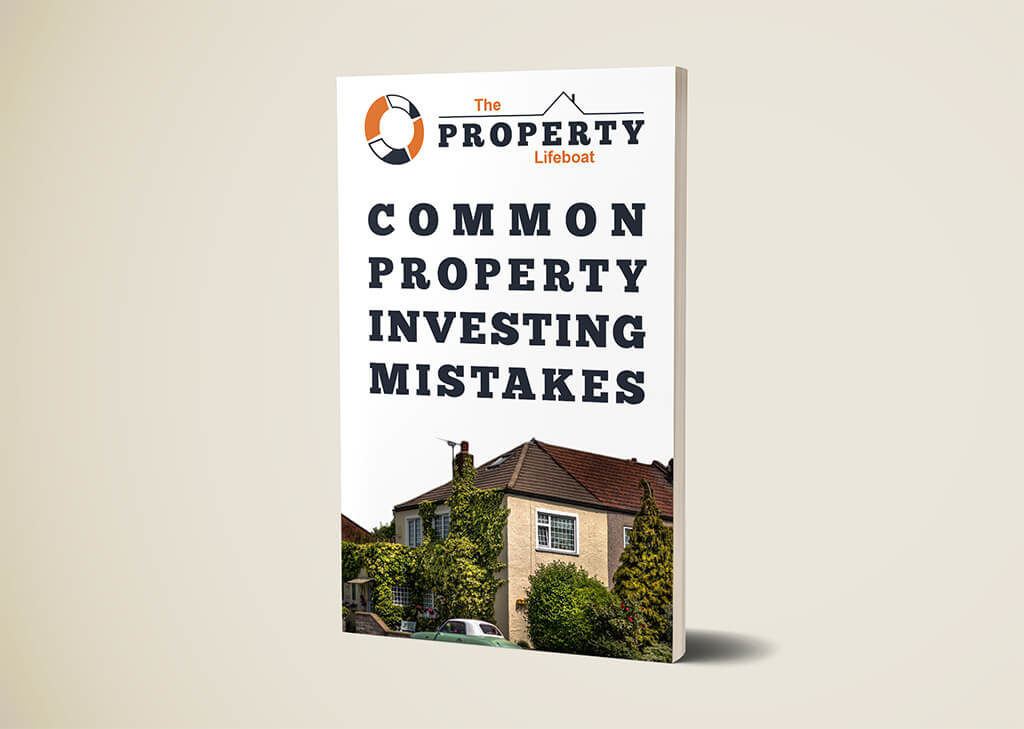
We have created a free guide to help you get going on your property investment journey. This invaluable guide includes the most common property investing mistakes. The guide is completely FREE and you can claim your free guide by clicking here.

